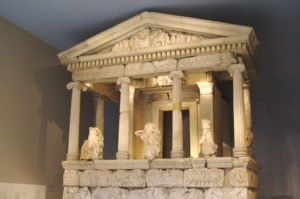Entertainment was of paramount salience to the ancient Romans. The Ancient Roman Events comprised of chariot racing, amphitheaters, public baths, and theatres, were something of which the ancient Romans never seemed to be bored of.

Ancient Roman Events
Chariot Race
Chariot racing was the oldest and the most popular leisure activity in ancient Roman times. It had tremendous mass appeal. As a sport, chariot racing was extremely expensive but a lucrative and profitable business. Chariot racing had four factions, blue, green, red and white.

The charioteers were decked in their respective colors during the races. Chariot racing was the means by which the successful charioteers could attain immense wealth and fame. The images of renowned charioteers were inscribed on specimens of molded glassware and their sculptures were made. Generally, green and blue were favorite ones among the ancient Romans.
Types of Events
There were diverse types of events which happened in the arena of an amphitheater. The word ‘arena’ is of Latin origin meaning sand, which was placed on the floor of the ancient Roman amphitheaters to imbibe the spilled blood of the gladiators.
Munera
Gladiatorial matches had been borrowed from the Etruscan funeral sites known as ‘Munera.’ The bulk of the gladiators in the ancient Roman period were criminals, prisoners of war or slaves, those who had nothing else to lose in life except for their lives.
Murmillo
Basically there were four main categories of gladiators, namely, ‘Murmillo’ who fought with a helmet to which a fish crest was affixed; ‘Retairitus’ a lightly armed gladiator having a net and a dagger; ‘Samnite’ fought with a sword and a helmet; and ‘Thracian’ who combated with a curved knife and a shield.

The amphitheater is a Roman contrivance. The first known ‘amphitheater’ can be dated back to 80 B.C. in Pompeii. Owing to the enormous and massive structure and design of the amphitheater, they were generally located on the outskirts of the ancient Roman towns. Military amphitheaters known as ‘Ludi’ were built near forts and fortresses and served as military training grounds.



